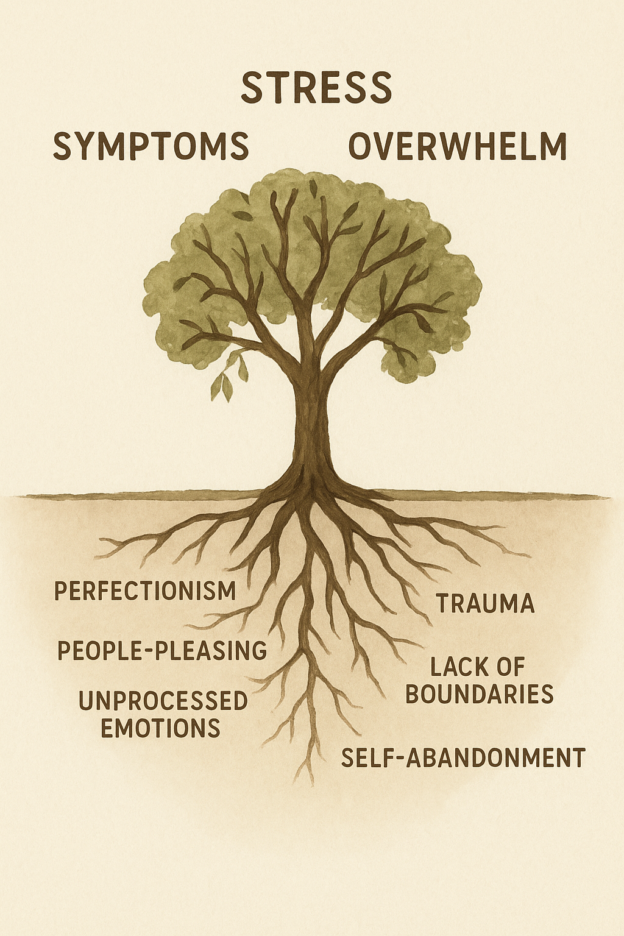A supportive, empowering message to women who have had their pain and symptoms dismissed for far too long.

For generations, possibly since the advent of modern medicine, women’s health concerns have been minimized, misunderstood, or dismissed outright. Women have been labeled “hysterical,” “dramatic,” or “too sensitive” when they were suffering with very real physical conditions. Many of us have been told our symptoms are “all in our heads,” that we’re overreacting, and that we simply need to calm down or push through. Or to “just get over it.”
Given that history, it is completely understandable that the idea of mind–body healing can feel uncomfortable or even insulting. For many women, it appears to echo the same harmful messages we’ve heard their whole lives:
“You’re imagining it.”
“It’s your fault.”
“Just get over it.”
That’s the opposite of what women deserve.
Women are not “more emotional.” We are more burdened.
Women experience higher rates of chronic pain, autoimmune illness, migraines, IBS, fatigue disorders, anxiety, and other stress-related conditions—not because we are weaker or more fragile–in fact, just the opposite! It is very likely that these conditions impact women more because we often carry more:
- Caregiving responsibilities
- Emotional labor at home and at work
- Discrimination and microaggressions
- Financial and workplace instability
- Exposure to trauma and unsafe relationships
- Pressure to be accommodating, calm, kind, and self-sacrificing
Women are often expected to perform at work as if we don’t have families, and at home as if we don’t have jobs. We are trained to consider others’ needs before their own. We are told to smile through pain and stay “pleasant,” no matter what we’re carrying. A body under those conditions will eventually speak up. Often through pain or symptoms.
When symptoms are neuroplastic, they’re not imaginary
Pain or symptoms that are created or maintained by the brain are not “made up,” “in your head,” or less legitimate or impactful. It simply means the nervous system has become overwhelmed and has created the symptom as an act of self-protection. The brain is incredibly powerful, and it can create real:
- pain
- inflammation
- skin conditions
- digestive issues
- dizziness
- fatigue
- nausea
- sensitivities to foods, sounds, light and chemicals
- sensations of numbness, tingling, itching and burning, and others
Neuroplastic symptoms are real. They can be severe. They can be disabling. And they are treatable.
Not with willpower.
Not with “pushing through.”
Not with being a “good patient.”
Not with pretending you’re fine.
But with approaches that calm and retrain the brain, address stress and overwhelm, restore agency, and bring your system back into balance.
Why women often hesitate to embrace mind–body neuroplastic treatments:
Women have excellent reasons to be cautious:
- We’ve often been dismissed by providers or been given answers and treatments that were not helpful or that made things worse.
- We’re often told that our symptoms are due to stress without receiving support to address the root cause.
- We’ve lacked adequate care, support, or time to heal.
- We haven’t had our suffering taken seriously.
So when someone says, “Your pain may be neuroplastic,” many women understandably hear:
“You’re imagining it.”
or
“It’s up to you to fix it alone.”
But in truth, neuroplastic healing is one of the most validating approaches available, because it says: “Your symptoms are real, your suffering is legitimate, and your healing matters.”
Mind–body healing is not self-blame — it is self-restoration.
Neuroplastic treatments do not ask women to ignore structural medical issues that need treatment, and they are not based on the idea that pain or discomfort is “all in your head.” What mind-body healing does do is empower women with tools that have been proven to reduce or eliminate chronic pain and other symptoms by addressing the overloaded nervous systems that so many women live with every day.
Healing happens through:
- Learning to feel safe in your body again
- Setting boundaries where life has demanded too much
- Addressing perfectionistic or self-sacrificial patterns that make life difficult
- Giving yourself the compassion you rarely receive from others
- Processing emotions you’ve had to suppress to survive
- Reclaiming agency over your health and wellbeing
It is about restoring your sense of safety and learning to live in a way that allows you to feel your feelings, prioritize your well-being, and live in a more authentic way. Living more authentically allows your nervous system to thrive and allows you to engage with life in a more joyful way.
You deserve a healing path that sees the whole you
Mind–body healing is not a message that something is wrong with you. It is a message that you’ve likely carried too much, and it’s taken a toll on your well-being. Your symptoms — painful, frustrating, frightening as they are — are your body’s way of saying:
“I’ve been carrying too much for too long.”
“I need care just as much as I give it.”
“I deserve safety, rest, and support.”
You deserve to feel fully supported as you reclaim your health, your agency, and your well-being.
If you’d like to schedule a consultation to discuss the symptoms you’re experiencing, contact me, or schedule an appointment.





